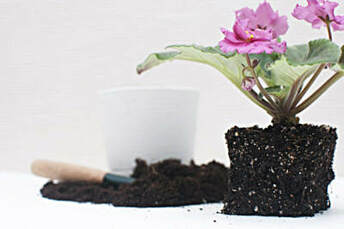
Winter Effects – Ruth Coulson (Originally published on the African Violets Down Under Facebook page.(www.facebook.com/groups/241227626277942/?fref=nf) When winter is upon us here in Perth, Western Australia, it is a slightly dryer climate than where Ruth Coulson liveson the Central North Coast of NSW. ?Winter again, and yes, cold does affect African violets. Originating, as the species do, in tropical east Africa, they really prefer mild to warm temperatures to give of their best. At temperatures below about 15C the plants will start to show signs of stress, and below 12°C real problems may develop. At even lower temperatures growth stops and plants may suffer permanent harm. We who live in areas where winters are fairly brief and mild know that we are fortunate in comparison with people in really freezing climates. Just a few brief months of cold nights and mild days, and then our violets will be growing happily again. But in the meantime: Common effects of cool temperatures:
How to avoid problems? Try to grow your African violets in the warmest room of the house. Remember, a room which seems beautifully warm during the day may be very cold at night and these night temperatures must be considered. A kitchen or laundry, where hot water heater, freezer and refrigerator are constantly giving off heat are often ideal spots for African violets during winter. Don't leave plants next to a cold window at night, especially never leaving them in the very cold area between curtains and window glass. If you grow your plants on window sills, it is a good idea to move them away at night. If this is not possible, a sheet of insulating material (e.g. cardboard or styrofoam sheeting) slipped between the plants and the glass overnight will probably help a little. Particularly precious or easily cold-damaged plants may be placed in a terrarium for extra protection. Check frequently for mould and mildew problems. Where heating reduces indoor humidity compensate by frequent misting with warm water, standing on moist pebble trays, etc. Keep plants together so that the resulting microclimate that they produce is to their mutual benefit. This reminds me of the Emperor penguins huddling in enormous numbers to with stand the rigors of the Antarctic winter! Keep away from open doors and windows to minimize gusts of cold air. If growing on light stands, follow the lead of some of our growers by encasing the stand in plastic from just before the lights turn off until after they tum on again. This will maximize the warming effect of the lights and keep temperatures up during the night. Check for fungal problems and for moisture damage to shelves. Other growers keep lights on at night and off during the day to take advantage of the heat of the lights during the coldest period. In much colder areas, running a small heater during the coldest part of the night might be considered necessary. During a cold winter do not:
There is an up-side to winter. Where temperatures are cool (but not so cold they actually damage the plant), benefits may include:
Another, possibly unseen benefit is that mites, thrips and other nasties are said to reproduce more slowly during cold weather. We all need to continue to be vigilant, however, but perhaps problems will not be so bad. And, of course, spring will soon be here! |